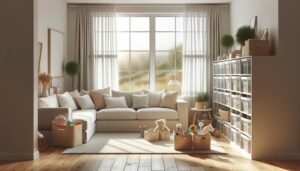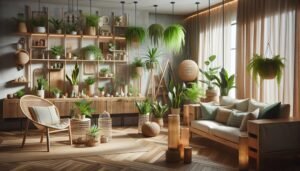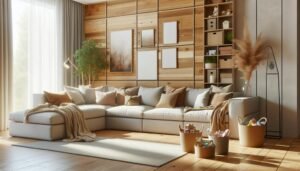Designing a home that caters to the needs of a modern family involves a delicate balance of style and functionality. From versatile living spaces to pet-friendly features, there are numerous innovative design ideas that can transform a house into a family-centric haven.
By incorporating these thoughtful elements, homeowners can create a space that not only looks stylish but also enhances the overall quality of family life. The key lies in merging practicality with aesthetics to create a harmonious environment that adapts to the evolving needs of each family member.
Key Takeaways
- Incorporate multifunctional furniture and creative storage solutions for space efficiency.
- Prioritize child-friendly design elements and ensure family safety with practical features.
- Design versatile living spaces with family-centric layouts and adaptable decor elements.
- Choose stylish and durable finishes to create long-lasting and functional family spaces.
Multifunctional Furniture Solutions
In modern family-centric home design, incorporating multifunctional furniture solutions is essential for optimizing space efficiency and versatility. Multifunctional furniture not only maximizes space utilization but also adds a layer of practicality to family-friendly interiors. These pieces are designed to adapt to the dynamic needs of a busy household, offering flexibility and convenience without compromising on style.
Family-friendly interiors benefit greatly from multifunctional furniture like convertible sofa beds that can easily transform a living room into a guest bedroom, storage ottomans that provide hidden storage for toys or blankets, and dining tables with extendable leaves for accommodating large family gatherings. These pieces enhance the functionality of a space while maintaining a stylish aesthetic that complements the overall design scheme.
Investing in quality multifunctional furniture can streamline organization and create a more efficient living environment for families. By carefully selecting pieces that serve multiple purposes, homeowners can achieve a balance between practicality and style in their family-centric home design.
Kid-Friendly Design Elements
When designing a family-centric home, incorporating kid-friendly design elements is crucial to ensure a safe and inviting environment for the youngest members of the household. In the family room, opt for furniture with rounded edges to prevent injuries and install child-proof locks on cabinets to keep hazardous items out of reach. Choose washable and stain-resistant fabrics for upholstery to handle spills and messes easily, making it practical for both kids and adults. Additionally, select durable and easy-to-clean flooring like hardwood or laminate for areas where kids spend more time playing.
Creating designated play areas with ample storage for toys not only keeps the space organized but also encourages children to engage in activities within their designated areas. Adjustable furniture pieces are also a smart choice as they can adapt to the changing needs of growing children, ensuring longevity and practicality in a family-centric home. By incorporating these kid-friendly design elements, you can strike a balance between functionality, safety, and style in your family home.
Creative Storage Solutions
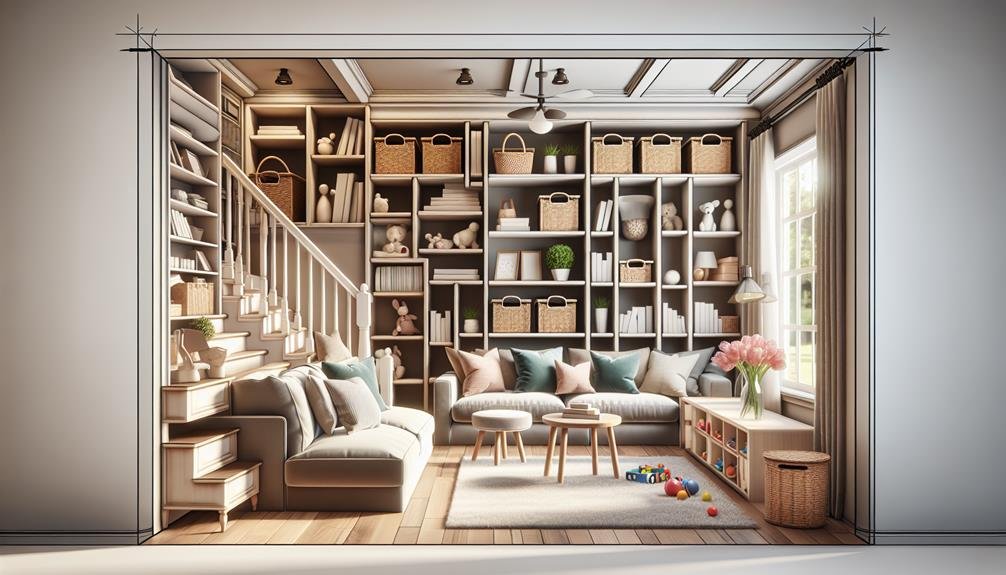
To optimize space and maintain organization in a family-centric home, exploring creative storage solutions is essential, especially in areas frequented by children. Utilizing under-bed storage bins and drawers can help maximize space in children's rooms, keeping toys and clothes neatly tucked away.
Wall-mounted shelves and cubbies offer a stylish solution for organizing toys and books, making them easily accessible yet neatly displayed. Ottomans and benches with hidden storage compartments provide a dual-purpose solution, offering both seating and space to stow away items.
Incorporating decorative baskets and bins not only helps keep clutter at bay but also adds a touch of style to the room. Additionally, built-in window seats with storage underneath can offer a cozy and functional seating option, perfect for reading corners or relaxation spots in family living areas.
Family-Focused Layout Design
Family cohesion and functionality are at the forefront of a well-designed family-focused layout. To create an environment that fosters interaction and togetherness, consider incorporating communal spaces like open-plan kitchens and living areas. These areas allow family members to engage in various activities while still being together.
It is also essential to ensure that play areas are visible from key living spaces, making it easier to monitor children while engaging in other tasks. Additionally, planning for sufficient storage solutions throughout the home is crucial for keeping the space organized and clutter-free.
Designing flexible room layouts that can adapt to changing family needs over time is another key aspect of a family-focused design. By strategically placing rooms based on functionality and anticipating age changes within the family dynamics, you can create a home that not only looks stylish but also caters to the practical needs of the family.
Stylish and Durable Finishes
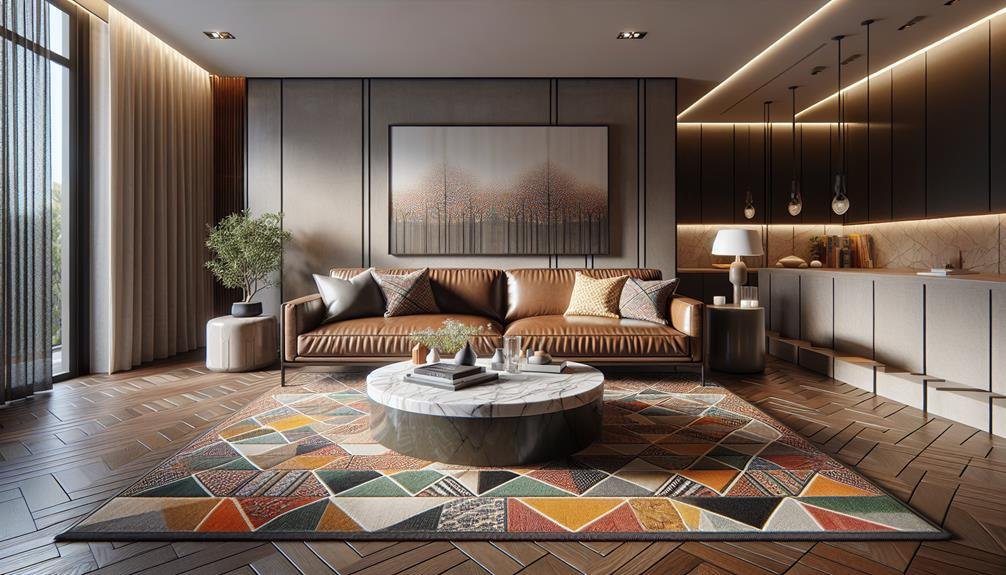
Incorporating stylish and durable finishes into your home design is essential to ensure longevity and resilience in high-traffic family spaces. When choosing finishes for your living room, especially with young children around, opt for materials that can withstand the wear and tear of daily life.
Consider the following tips to create a stylish and family-friendly environment:
- Choose durable finishes like stain-resistant fabrics and scratch-resistant surfaces to maintain the aesthetics of your living room despite the inevitable spills and scratches.
- Opt for easy-to-clean materials such as leather, microfiber, or performance fabrics to simplify the maintenance process and keep your living space looking fresh.
- Consider child-friendly finishes like rounded edges, non-toxic paints, and washable wall coverings to ensure the safety of your little ones while adding a touch of style to your decor.
Practical Mudroom Setup
When designing a family-centric home, creating a practical mudroom setup is crucial for maintaining organization and cleanliness in high-traffic areas. A mudroom is a dedicated space for storing outdoor gear, shoes, and accessories, serving as a transition area to keep the main living areas tidy. A well-designed mudroom often includes built-in storage cubbies, providing designated spots for each family member's belongings. Hooks for hanging coats and a bench for putting on shoes add functionality to the space, making it easier for family members to grab what they need on the go.
When planning the layout of your home, consider placing the mudroom near the primary entrance or garage access for convenience. By setting up an efficient mudroom with storage cubbies and a bench, you can streamline your family's daily routines and prevent clutter from spreading throughout the house. This practical setup not only helps maintain cleanliness but also adds a stylish and functional element to your home design.
Functional Kitchen Design
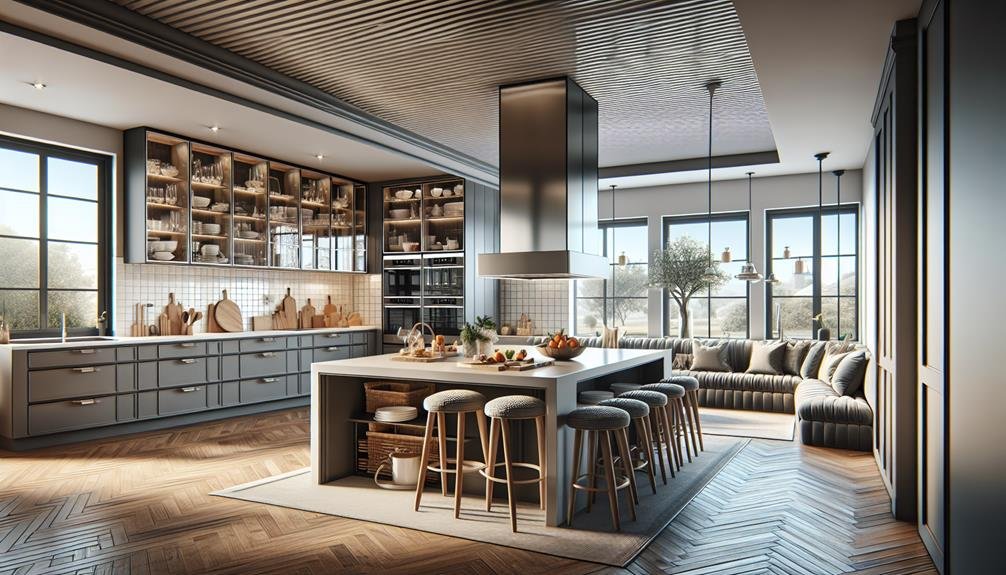
The kitchen serves as the central hub of a family home, catering to the diverse needs of multiple household members efficiently. To enhance the functionality and appeal of the kitchen, consider incorporating the following elements:
- Breakfast Cupboard: A designated space for breakfast essentials can streamline morning routines and promote family bonding over meals.
- Butler's Pantry: This addition provides extra storage and prep space, keeping the main kitchen area organized and clutter-free.
- Designated Snack Area: Creating a specific zone for snacks encourages healthy eating habits and offers a convenient spot for quick bites throughout the day.
In terms of interior design, prioritize a layout that facilitates seamless living. Ensure the kitchen layout accommodates a homework station, charging station, and rubbish bin location for practicality and efficiency. Opt for durable materials and child-safe designs to create a space that can withstand the demands of a lively family environment while maintaining a stylish aesthetic.
Versatile Living Spaces
Versatile living spaces are essential for accommodating the dynamic needs of modern families, allowing for seamless transitions between various activities and functions within the home. To create versatile living spaces, consider incorporating flexible furniture arrangements that can adapt to different functions throughout the day. This could include modular sofas, movable storage units, and collapsible tables that can easily transform the room to suit different needs.
In addition to flexible furniture, utilizing adaptable decor elements can also enhance the versatility of a space. By incorporating easily switchable items such as throw pillows, rugs, and artwork, you can quickly create new vibes in the room without major renovations. Designing multi-functional areas within the living spaces is also key to maximizing the use of space. Creating designated zones for specific activities like work, play, and relaxation can help family members better utilize the room for their various needs.
When planning versatile living spaces, consider these room ideas to ensure that your home can effortlessly cater to the diverse activities and functions of a modern family.
Pet-Friendly Home Features
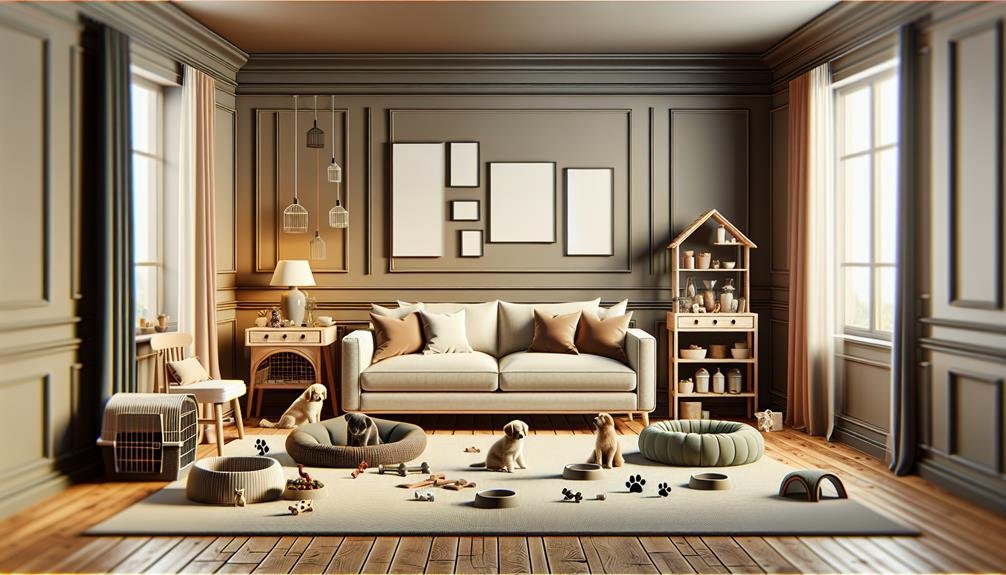
Incorporating pet-friendly design elements into your home can create a welcoming and comfortable environment for your furry companions. To ensure your space accommodates both your busy family and pets, consider the following features:
- Scratch-Resistant Flooring: Choose durable flooring materials like laminate or luxury vinyl that can withstand the wear and tear from your pets' claws.
- Dedicated Pet Area: Designate a specific area with storage for pet essentials to maintain an organized space that suits both your family and pets.
- Stain-Resistant Upholstery: Opt for furniture with easy-to-clean, stain-resistant fabrics to prevent any mishaps from affecting the aesthetic of your living space.
Future-Proof Design Concepts
Implementing forward-thinking design strategies ensures that your family home can adapt and grow alongside your evolving needs and lifestyle. To make sure your home is future-proof, there are several things to consider.
Firstly, focus on creating spaces that can accommodate children living at home longer by investing in durable furniture pieces that can withstand wear and tear over time. Updating decorative items as your children grow will help maintain the space's relevance and appeal as your family dynamics change.
It's also essential to consider room styling changes as children age, adapting to their evolving preferences and needs within the home. Safety should be a top priority, so incorporating child-proof doors, secure windows, and safe play areas are crucial aspects of future-proof design for a family-centric home.
Frequently Asked Questions
How Can I Make My House Look Like a Designer Home?
To achieve a designer home look, focus on incorporating high-quality, timeless furniture and decor pieces, utilizing a cohesive color palette with varied textures, paying attention to detail with lighting, hardware, and accessories, investing in statement pieces like designer rugs or artwork, and maintaining a clutter-free, organized space.
How to Design a Home for a Family?
Designing a family-oriented home involves optimizing communal spaces, ensuring safety, and incorporating durable elements. Creating a practical layout, easy access storage, and adaptable areas for growth are essential. Prioritizing functionality, organization, and longevity is key for a family-centric design.
What Makes a Good Family Home?
A good family home prioritizes communal spaces, ample natural light, and effective storage solutions to maintain organization. Tailoring spaces to cater to diverse family needs, offering design flexibility for changing dynamics, and strategic location planning are vital elements of a well-designed family home.
How to Design Home With Low Budget?
To design a home with a low budget, consider thrift shopping, repurposing furniture, engaging in DIY projects, and scouting for end-of-season sales or clearance items. Renting furniture for special occasions can also be a cost-effective option.
